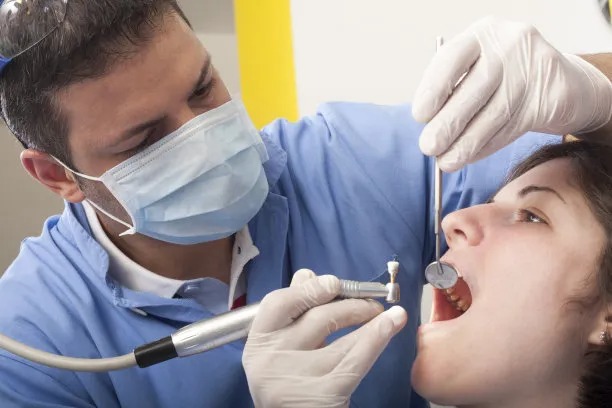Essential Precautions to Ensure Safe and Effective Root Canal Treatment for Patients and Dentists Alike
Summary: Root canal treatment remains one of the most crucial procedures in modern dentistry, aimed at saving natural teeth and alleviating pain. This article delves into essential precautions that ensure both patients and dentists experience safe and effective outcomes during this procedure. Covering aspects such as proper diagnosis and treatment planning, adherence to sterilization protocols, patient management, and post-treatment care, we explore practical ways to enhance the overall experience and effectiveness of root canal treatments. By focusing on these vital areas, we can minimize risks and improve the success rates of this common dental procedure.
1. Importance of Accurate Diagnosis and Treatment Planning

Accurate diagnosis is the cornerstone of effective root canal treatment. Before commencing any procedure, dentists should perform a thorough examination, including X-rays and other necessary imaging techniques, to assess the extent of damage or infection within the tooth. This initial step ensures that the dentist understands the specifics of the case, enabling them to develop a comprehensive treatment plan.
Moreover, treatment planning should take into consideration the patients medical history, allergies, and any ongoing medications. Each of these factors can influence the approach to treatment and helps in identifying potential complications. Hence, discussing medical history can lead to tailored and effective treatment strategies.
Also, dentists must educate their patients about the procedure and its implications. Clear communication helps build trust and enables patients to have realistic expectations regarding outcomes and potential discomfort. Educated patients are more likely to comply with pre-treatment instructions, ultimately leading to safer treatment delivery.
2. Adherence to Sterilization and Infection Control Protocols
One of the critical precautions in root canal treatment is adhering to strict sterilization and infection control protocols. Dentists must ensure that all instruments utilized in the procedure are meticulously sterilized before use. This step is paramount to minimize the risk of infections and cross-contamination during treatment.
In addition to sterilizing instruments, the operatory environment must also be maintained at high standards. Regular cleaning and disinfection of dental units, surfaces, and air filtration systems are vital for preventing any microbial contamination during procedures.
Furthermore, personal protective equipment (PPE) should be used consistently by dental practitioners. This includes gloves, masks, and protective eyewear for both dentists and patients. Adopting these measures not only safeguards the dentists health but also protects the patient from potential infections.
3. Effective Patient Management Techniques
Effective patient management is essential for the success of root canal treatments. Dentists should create a calming and reassuring environment to alleviate patient anxiety and fear associated with dental procedures. This can include explaining the steps involved and addressing any concerns patients may have, thereby promoting a positive treatment experience.
Moreover, employing sedation techniques can significantly enhance patient comfort during the procedure. By offering options such as nitrous oxide or oral sedatives, dentists can ease the patients anxiety, enabling them to tolerate the treatment better and minimizing the perception of pain.
Post-operative instructions should also be clearly communicated to patients once the procedure is complete. This includes advice on pain management, dietary restrictions, and signs of potential complications that warrant immediate attention. Proper instructions can ensure a smooth recovery and prompt identification of any issues that may arise following treatment.
4. Importance of Post-Treatment Care and Follow-Up
Post-treatment care plays a crucial role in the success of root canal therapy. After the procedure, dentists should ensure that patients understand the importance of maintaining oral hygiene to prevent reinfection. They should emphasize the significance of regular brushing and flossing, along with any prescribed mouth rinses.
Follow-up appointments are equally important to monitor healing and assess the success of the treatment. During these visits, dentists can identify any complications early on, providing timely interventions that can save the tooth and prevent further discomfort.
Additionally, educating patients about the signs of complications is vital. This includes persistent pain, swelling, or unusual discharge. Empowering patients with this knowledge not only assures better outcomes but also fosters a sense of responsibility towards their oral health.
Summary:
In summary, ensuring safe and effective root canal treatment requires diligence and foresight on the part of dental practitioners. By adhering to precise diagnosis and treatment planning, following strict sterilization protocols, managing patients effectively, and providing thorough post-treatment care, both dentists and patients can enhance the success of this vital procedure.
Ultimately, these precautions not only protect the health and well-being of patients but also foster a trusting relationship between patients and their dentists, leading to improved health outcomes.
This article is compiled by Vickong Dental and the content is for reference only.



